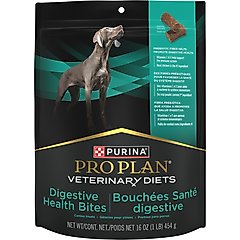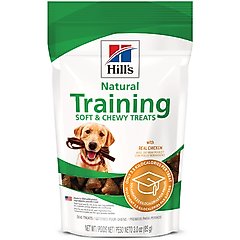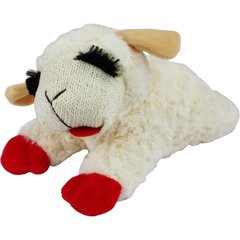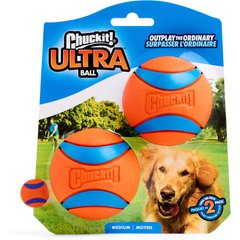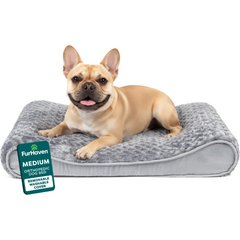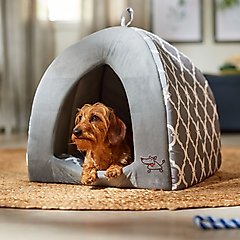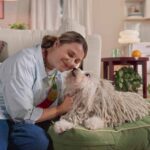Do Dogs Like Hugs? How to Tell If Your Pup’s a Fan
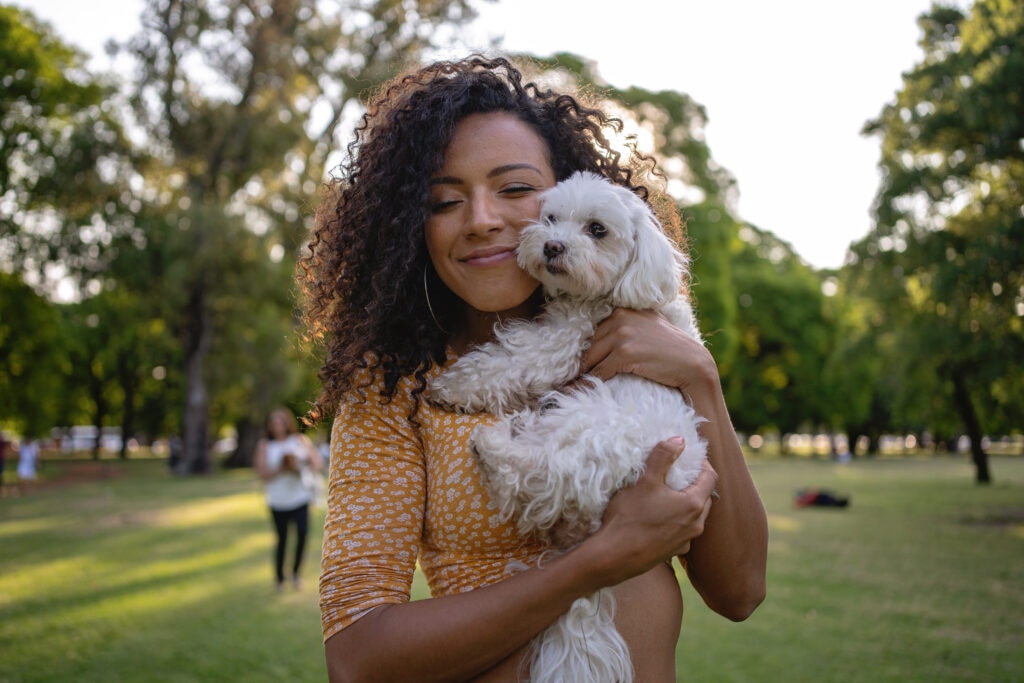
Photo by FluxFactory / E+
You love your dog, so it’s natural to want to wrap them up in a big, heartfelt hug. But do dogs enjoy hugs the same way humans do? While some pups may welcome a warm squeeze, others might find it confusing, uncomfortable, or even stressful.
Is It OK to Hug Your Dog?
It’s OK to hug your dog if they like it.
Just like humans, dogs have varying levels of comfort with hugs. While you see hugging as a way to show affection, your dog might not interpret it the same way.
“Dogs do not inherently understand hugs the way humans do,” says Samuel Varon, DVM, a companion-animal veterinarian and owner of Broadway Animal Hospital in Sacramento, California. “While some dogs may tolerate or even enjoy the physical closeness, others may feel uncomfortable or stressed.”
Whether a dog enjoys hugs often depends on their personality and past experiences, including how well they’ve been socialized. Some dogs are naturally more comfortable with close contact, while others feel trapped or anxious when held too tightly, according to Bethany Hsia, DVM, co-founder of CodaPet.
That’s why it’s crucial to let your dog set the pace. Hugging should be something that happens on their terms, and if your dog isn’t into it, it’s best to respect their personal space.
4 Signs That Your Dog Likes to Hug
But how can you tell if your dog likes a good squeeze as much as you do? They’ll usually give you signs that they feel secure and relaxed.
Relaxed Body Language
Relaxed body language is one of the clearest ways to tell that your dog is comfortable with affection, says Dr. Varon. When a dog is at ease, their muscles are loose, their eyes are soft, and they may wag their tail. They might also blink slowly or have an open mouth with a relaxed tongue.
Leaning Into You
Dogs who enjoy hugs will often push into the contact rather than pull away, according to Dr. Hsia. Leaning into you can also be a dog’s way of seeking more affection, especially if paired with other relaxed body cues like soft eyes or a wagging tail.
Gentle Licking
In dog language, licking is a social behavior that strengthens bonds and helps them express affection. So gently licking your hands or face might be your dog’s way of trying to show that they’re a big fan, according to Dr. Varon.
However, dogs sometimes also lick as a sign of submission, so it could also be a polite way of saying “please stop.” Pay attention to the rest of their body language for context about what your dog’s lick means.
Nuzzling or Resting Their Head on You
If your dog rests their head on you or nuzzles against you, it’s a subtle sign they’re enjoying the moment and trust you deeply, according to Dr. Hsia. An even stronger sign is if they seek out hugs and physical affection on their own.
How Can You Tell If Your Dog Hates Hugging?
On the flip side, some dogs will show clear signs that they’re not comfortable with a snuggle, and that’s OK too. Their body language speaks volumes, so keep an eye out for these stress signals:
- Tense muscles or rigid posture
- Turning away
- Avoiding eye contact or showing the whites of their eyes
- Whining, whimpering, or growling
- Pinning their ears back
- Tucking their tail
- Trying to escape
If your dog is showing any of these signs, you should respect their boundaries, Dr. Hsia says.
5 Reasons Your Dog Might Not Want a Hug
If your pup pulls away or stiffens up when you go in for a squeeze, it’s not personal—there’s usually a reason behind it. Here are a few that might explain why your dog needs their space.
Anxiety
Some dogs are naturally anxious, and being held too tightly can make them feel trapped or overwhelmed. Dr. Hsia says many dogs experience anxiety in close quarters, and a hug, which restricts their movement, can trigger that stress response.
Even dogs that normally enjoy closeness might feel uneasy if the hug feels too confining. If your dog tends to shy away from other forms of restraint (like having their nails trimmed or being picked up), they may also be less comfortable with hugging.
Confusion
Dogs don’t inherently understand what a hug means. While we see it as a gesture of love, dogs interpret body language very differently.
In the wild, you never see dogs hugging, so when we wrap our arms around them, it can feel foreign or uncertain, according to Dr. Varon.
Bad Associations
If your dog has had negative experiences with being held or restrained (like at the vet or during grooming), they may associate hugs with fear or discomfort. Dogs learn from past experiences, so even if your hug is gentle, it might remind them of a time when they felt scared or helpless.
Dr. Varon points out that dogs who haven’t been gently exposed to close physical contact at an early age are more likely to react negatively to hugs.
Physical Pain
If your dog is injured or has joint pain, hugging could add to their discomfort. This is especially common in senior dogs or breeds prone to orthopedic issues, like German Shepherds and Labrador Retrievers. Hugging can also exacerbate pain in dogs with physical ailments, such as arthritis or injuries, according to Dr. Hsia.
If your dog flinches, yelps, or pulls away during a hug, check with your vet to rule out pain as a possible cause.
Personal Preferences
Just like people, dogs have their own personalities, likes, and dislikes. Some dogs simply don’t enjoy being hugged, and that’s OK. It doesn’t mean they don’t love you; they just prefer other forms of affection, like a belly rub.
Every pup is different, and honoring their boundaries shows true love and respect.
Other Ways to Show Your Dog You Love Them
Dogs and hugs don’t always go hand-in-paw, but that doesn’t mean you can’t build a strong, affectionate bond in other ways. Here are some things you can do to show affection:
- Pet them gently: Dogs often enjoy calm, soothing pets, especially on their belly or behind the ears.
- Spend time together: Quality time can be just as meaningful as a hug and builds trust with your dog, says Dr. Varon. Playtime, walks, and training sessions all strengthen your bond.
- Give them positive reinforcement: Dog treats or dog toys during training sessions are great rewards for good behavior.
Recommended Products
- Respect their space: Allowing your dog to seek affection on their own terms helps them feel safe and loved. You can also give them a comfortable space to retreat to, like a cozy dog bed or hideaway tent.
Recommended Products
FAQs About Dogs and Hugs
Q: Do dogs feel affection when you hug them?
A: When you hug a dog, they may not understand its meaning the way you do. But if they’re comfortable, they may feel affection through the physical touch. It all depends on the individual dog.
Q: Do dogs like to cuddle?
A: It’s OK to cuddle your dog if they enjoy it. If your pup thrives on closeness, they may even initiate snuggle time with you on the couch. Always be mindful of their body language to make sure they’re comfortable.
Q: Do dogs like to be kissed?
A: Dogs don’t understand kisses the way humans do, so it depends on the dog. Some pups may tolerate or even enjoy kisses if they’ve learned to associate them with positive attention. Others might find a kiss confusing or intrusive.
Q: Do dogs understand what a hug means?
A: Dogs can associate hugs with positive experiences, but they don’t inherently understand the emotional significance behind them. Instead of seeing hugs as a gesture of love, they’re more likely to interpret them based on how the hug feels to them—either safe and pleasant or confusing and restrictive.
Q: Do dogs hug each other?
A: Dogs don’t hug in the same way humans do, but they do show affection in other ways, such as leaning against each other, nuzzling, or licking.
Attributions
This content was medically reviewed by Kelly Gold, DVM, Chewy veterinarian.
